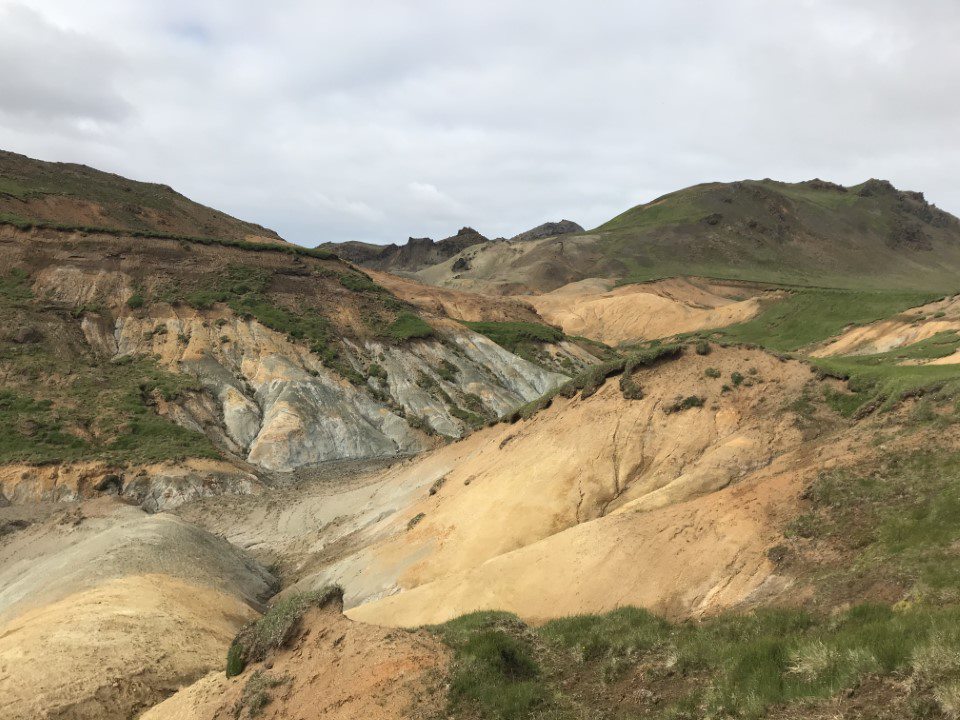Vinna við nýjar heimasíður Umhverfis- og orkustofnunar og Náttúruverndarstofnunar er í gangi. Heimasíða Umhverfisstofnunar er virk á meðan vinnunni stendur. Information in English
Reykjanes Public Park

Reykjanesfólkvangur was protected as a country park in 1975. There are many geothermal areas and sites of natural interest within the country park. There are many volcanoes within the country park, mostly low lava shields and volcanic fissures. Tuff mountains and mesas in various forms are characteristic of the area’s landscape. Within the country park’s boundaries is the nature reserve Eldborg, under Geitahlíð. Naðurtunga (adder’s tongue) is found within the country park; it is on the Icelandic Institute of Natural History's endangered list and believed to be widespread around hot springs north of Trölladyngja.
The country park covers an area of 29,262.7 ha.
Endangered Area
Strengths
The geology of the area is remarkable on a global scale, with volcanoes of various types as well as old and new lava fields. There are many relics from people’s way of life in the past. The area is an important outdoor activity area. There is a great variety of geological formations, landscapes and colours, unusual lakes, diverse lava, grassy bales and fields and geothermal heat with associated colours that characterise the area. Within the country park are areas that could be categorised as wilderness. Areas like Reykjanesfólkvangur, this close to urban centres, are very valuable. Information signs have been put up in recent years. In summer, a land ranger is employed by the Reykjanesfólkvangur board. Volunteers for the Environment Agency have worked on various tasks such as removing garbage, in the country park, in collaboration with the land ranger. The country park’s board presented a management plan for the period 2012–2022 in April 2012, and work was done based on that in 2013.
Weaknesses
Within the country park is a hot spring area and formations that are very fragile. The land was widely vegetated but has been over-exploited and is now badly damaged in places due to over-grazing and erosion. There is considerable soil erosion within the country park. Various hobby groups have claimed the area for activities such as for off-road driving, and the ground is badly damaged in many places. The area is close to large urban centres, which comes with a lot of traffic. There are plans for research and utilisation of geothermal power in accordance with the framework programme. The country park contains around 23 mines; most are incomplete or in use.
Threats
- There is increased stress damage due to general traffic and various types of land use. Visits outside of the traditional tourist season are increasing.
- The cave Leiðarendi is under considerable stress due to poor conduct.
- Off-road driving.
- Contractors and others have been found to dump waste within the country park.
- It is common for people to practice their shooting skills within the country park.
- Naðurtunga, which grows in the area and is widespread around hot springs north of Trölladyngjais, is considered to be at risk (LR) according to the Icelandic Institute of Natural History’s endangered list.
Opportunities
- The warning sign by Krýsuvíkurbjarg needs to be renewed.
- Access to various places can be improved, e.g. in Krýsuvíkurbjarg, by Húshólmi, Selatangi, Leiðarenda, Kleifarvatn and by the Krýsavík farm.
- Certain parking lots within the country park must be restricted in order to prevent off-road driving.
- Education on off-road driving must be improved, and increased surveillance has yielded good results.
- The removal of unnecessary fences must be continued, as must the removal of garbage.
- Ideally, a land ranger should be available in the area all year round. A land ranger has been employed by the Reykjanesfólkvangur board. The presence of the land ranger has reduced off-road driving, as well as other illegal practices in the area.
- Measures to protect Leiðarendi and other caves in the area need to be considered.
- Education and information about the country park and the sites of natural interest and cultural heritage within it must be promoted.
- Previous vegetation would need to be restored, thus strengthening the maintenance of the ecosystems in the area and stopping soil erosion. Lupin must be eradicated.
- Reclamation of land in Krýsuvíkurheiði.
- A land-use plan and developments are planned in Seltún.